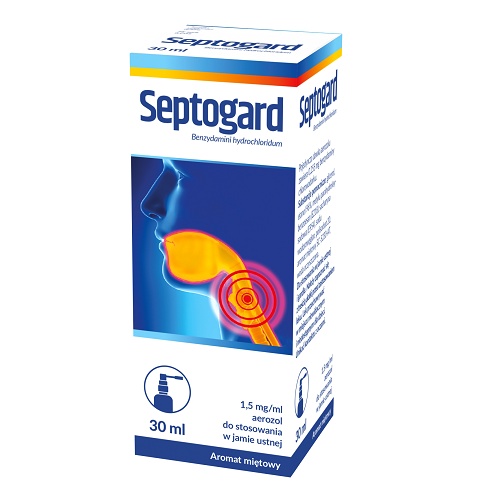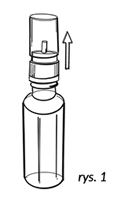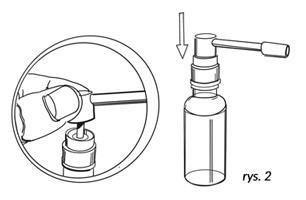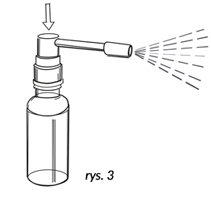

Septogard

Ask a doctor about a prescription for Septogard

How to use Septogard
Package Leaflet: Information for the User
Septogard, 1.5 mg/ml, Oral Spray
Benzydamine Hydrochloride
Read all of this leaflet carefully before using this medicine because it contains important information for you.
This medicine should always be used exactly as described in this leaflet or as directed by your doctor, pharmacist, or nurse.
- You should keep this leaflet, you may need to read it again.
- If you have any further questions, ask your pharmacist.
- If you get any side effects, talk to your doctor, pharmacist, or nurse. This includes any possible side effects not listed in this leaflet. See section 4.
- If after 7 days there is no improvement or you feel worse, you should contact your doctor.
Contents of the Package Leaflet
- 1. What is Septogard and what is it used for
- 2. Before you use Septogard
- 3. How to use Septogard
- 4. Possible side effects
- 5. How to store Septogard
- 6. Contents of the pack and other information
1. What is Septogard and what is it used for
Septogard contains the active substance benzydamine hydrochloride, which belongs to a group of medicines called non-steroidal anti-inflammatory drugs (NSAIDs).
Septogard relieves pain and reduces inflammation (swelling). It is used to treat many painful disorders of the mouth or throat, such as:
- mouth ulcers
- sore throat
- pain in the mouth or gums
- toothache
2. Before you use Septogard
Do not use Septogard:
- if you are allergic to benzydamine hydrochloride or any of the other ingredients of this medicine (listed in section 6).
Warnings and precautions
Before using Septogard, tell your doctor, dentist, or pharmacist:
- if you have ever had asthma or allergic diseases;
- if you are allergic to acetylsalicylic acid or other non-steroidal anti-inflammatory drugs (NSAIDs). If you are not sure if any of the above applies to you, talk to your doctor, dentist, or pharmacist before using Septogard.
Septogard and other medicines
Tell your doctor, dentist, or pharmacist about all the medicines you are taking, have recently taken, or might take, including those obtained without a prescription.
Pregnancy, breastfeeding, and fertility
If you are pregnant, breastfeeding, think you might be pregnant, or plan to become pregnant, ask your doctor, dentist, or pharmacist for advice before using this medicine.
Driving and using machines
Septogard has no or negligible influence on the ability to drive and use machines.
Septogard contains ethanol, methyl parahydroxybenzoate (E 218), and sodium
Methyl parahydroxybenzoate (E 218)
This medicine may cause allergic reactions (possible late reactions).
Etanol
This medicine contains 13.6 mg of ethanol (alcohol) in each single dose. The amount in one dose of this medicine is less than 1 ml of beer or 1 ml of wine. The small amount of alcohol in this medicine will not have any noticeable effects.
Sodium
This medicine contains less than 1 mmol (23 mg) of sodium per dose of 8 single doses, which means it is essentially 'sodium-free'.
3. How to use Septogard
Use this medicine exactly as described in this leaflet or as directed by your doctor, dentist, or pharmacist. If you are not sure, talk to your doctor, dentist, or pharmacist.
Do not use Septogard in the eyes or near the eyes. If the spray gets into your eyes, rinse them immediately with cold water.
The recommended dose is:
- Adults, adolescents, and elderly:4 to 8 sprays, 2 to 6 times a day, not more often than every 1.5-3 hours;
- Children (6-12 years old):4 sprays, 2 to 6 times a day, not more often than every 1.5-3 hours;
- Children under 6 years old:1 spray per 4 kg of body weight, up to a maximum of 4 sprays, 2 to 6 times a day, not more often than every 1.5-3 hours.
How to use the spray
- 1. The product requires the attachment of the spray nozzle before use.
- 2. During use, hold the bottle upright.
- 3. Remove the protective cap (Fig. 1).
2

- 4. Then attach the spray tip provided with the packaging (Fig. 2). It should be firmly attached to the spray pump.

- 5. When using the spray for the first time, turn the spray nozzle away from yourself and others. Then press the white pump button several times until a mist appears at the end of the spray nozzle (Fig. 3). The spray is now ready for use.

- 6. Direct the spray nozzle at the painful area of the throat or mouth and press the white pump button firmly. One press of the button releases one dose of the medicine.
- 7. Use the recommended number of sprays as described above. During administration, hold your breath. Then wipe the end of the spray nozzle with a disposable tissue. This will help keep the spray nozzle clear.
- 8. If the spray becomes blocked or does not work properly, return it to the pharmacy. Do not attempt to unblock the spray nozzle. No additional cleaning of the product is required during use.
This medicine should be taken after meals or drinks.
If you use more Septogard than you should
If you have taken more than the recommended dose or accidentally swallowed a large amount of the medicine, contact your doctor, dentist, or pharmacist immediately for advice.
If you forget to use Septogard
Do not take a double dose to make up for a forgotten dose.
If you have any further questions on the use of this product, ask your doctor, dentist, or pharmacist.
4. Possible side effects
Like all medicines, this medicine can cause side effects, although not everybody gets them.
Some side effects can be serious. If you experience any of the following side effects, stop using this medicine and contact your doctor immediately or go to the nearest emergency room:
- Severe allergic reactions, whose symptoms may include difficulty breathing, chest pain or tightness and/or dizziness/fainting, severe skin itching or hives, swelling of the face, lips, tongue, and/or throat, which can potentially be life-threatening.
The following side effects have also been reported by patients using Septogard with the following frequency:
Uncommon (may affect up to 1 in 100 people):
- numbness and/or burning sensation in the mouth and/or throat
Rare (may affect up to 1 in 10,000 people):
- difficulty breathing and wheezing
- itching
- skin rash
- increased sensitivity to light (skin becomes more sensitive to sunlight than usual, resulting in an itchy, red, flaky rash, sometimes with blisters)
Frequency not known (cannot be estimated from the available data):
- redness or swelling of the skin
- allergic reaction (hypersensitivity)
Reporting of side effects
If you get any side effects, talk to your doctor, pharmacist, or nurse. This includes any possible side effects not listed in this leaflet. You can also report side effects directly via the national reporting system listed in the https://smz.ezdrowie.gov.plwebsite.
By reporting side effects, you can help provide more information on the safety of this medicine.
5. How to store Septogard
Keep this medicine out of the sight and reach of children.
Store in the original package.
There are no special temperature storage requirements for this medicine.
Do not use this medicine after the expiry date stated on the bottle and carton after EXP. The expiry date refers to the last day of that month.
Do not use this medicine for more than 12 months after first opening.
Medicines should not be disposed of via wastewater or household waste. Ask your pharmacist how to dispose of medicines no longer required. These measures will help protect the environment.
6. Contents of the pack and other information
What Septogard contains
- The active substance is benzydamine hydrochloride (1.5 mg per 1 ml of solution). Each dose of the spray contains 0.225 mg of benzydamine hydrochloride.
- The other ingredients are: glycerol, ethanol (96%), methyl parahydroxybenzoate (E 218), sodium saccharin (E 954), sodium bicarbonate, polysorbate 20, peppermint flavor SC-5230-AT (maltodextrin and menthol), purified water.
What Septogard looks like and contents of the pack
Septogard is an oral spray. It is a clear, colorless liquid, available in a bottle with a metered-dose pump and a protective cap, in a carton. This means that a measured dose of the spray is delivered with each use.
Pack sizes: bottle containing 15 ml or 30 ml of solution in a carton. Not all pack sizes may be marketed.
Marketing Authorization Holder and Manufacturer
Marketing Authorization Holder
Farmak International Sp. z o.o.
ul. Koszykowa 65
00-667 Warszawa
tel. +48 22 822 93 06
e-mail: [email protected]
Importer
Symphar Sp. z o.o.
ul. Chełmżyńska 249
04-458 Warszawa
This medicinal product is authorized in the Member States of the European Economic Area under the following names:
Poland: Septogard
Date of last revision of the leaflet:
5
- Country of registration
- Active substance
- Prescription requiredNo
- ImporterSymphar Sp. z o.o.
- This information is for reference only and does not constitute medical advice. Always consult a licensed doctor before taking any medication. Oladoctor is not responsible for medical decisions based on this content.
- Alternatives to SeptogardDosage form: Aerosol, 1.5 mg/mlActive substance: benzydaminePrescription not requiredDosage form: Aerosol, 3 mg/mlActive substance: benzydamineManufacturer: Laboratorios Bohm SA Laboratorium Sanitatis S.L. MCM Klosterfrau Vertriebsgesellschaft mbHPrescription not requiredDosage form: Lozenge, 3 mgActive substance: benzydaminePrescription not required
Alternatives to Septogard in other countries
The best alternatives with the same active ingredient and therapeutic effect.
Alternative to Septogard in Spain
Alternative to Septogard in Ukraine
Online doctors for Septogard
Discuss dosage, side effects, interactions, contraindications, and prescription renewal for Septogard – subject to medical assessment and local rules.







